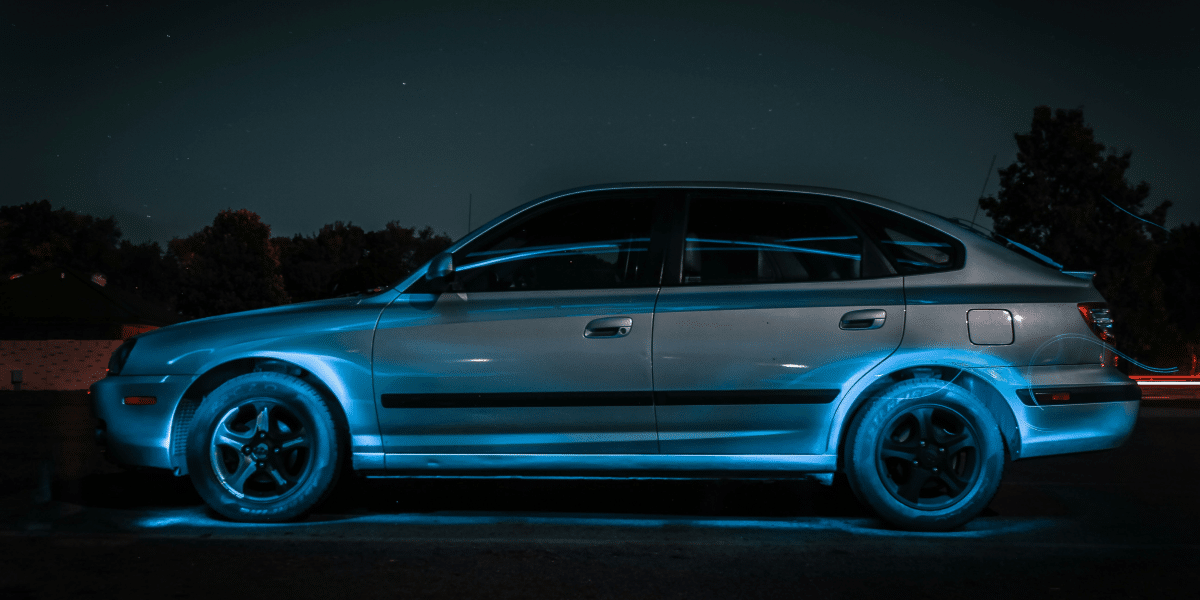Very few brands have won the affection of sports car enthusiasts as much as Subaru. With years of rallying honors and an insistence on reliable products in all weather conditions, Subaru has carved out a unique niche for itself in the automotive world. The iconic Subaru WRX and Subaru BRZ are agile performers among their latest models. Both are cars for driving enthusiasts, but they form a different view of performance, attracting more attention in life today—a big difference.
From the Rally to the Road: The Subaru WRX
In rally racing, the Subaru WRX, short for “World Rally Experimental,” obtained instant success. Its turbocharged engine, four-wheel drive, and ability to confidently traverse any road surface quickly gave WRXs a cult following. Over the years, the WRX has undergone modifications, but its inherent characteristics have remained the same.
At the heart of today’s WRX is a 2.4L turbocharged boxer engine with 271 horsepower and 258 lb-ft of torque. This flat-four configuration gives the car a low center of gravity and helps with handling characteristics. Power is sent to all four wheels via Subaru’s famous Symmetrical All-Wheel Drive System, ensuring good grip in various driving conditions.
Performance in the Subaru WRX isn’t just a matter of linear speed. Its rally-style suspension setup means the car is also very agile in the corners while maintaining a level of comfort suitable for everyday driving. Steering is precise and conveys what’s happening under your wheels so you feel like a part of the road surface.
The cabin of the WRX is driver-focused, with comfortable seats, a leather-wrapped steering wheel, and infotainment designed for easy operation. Though it lacks the luxury of some rivals, it’s built to make it a robust and comfortable environment for enthusiastic driving. One of the critical points of the WRX is its practicality. Unlike many sports cars, the WRX is built on a sedan platform. It seats up to five passengers to live with it every day, and if you need to carry stuff home from the store in your trunk, this is perfect.
The Subaru BRZ: Pure Sports Car Thrills
Taking a more traditional approach to sports car design than the WRX, the Subaru BRZ was developed with Toyota (its counterpart under the GR86 brand). This lightweight rear-wheel drive coupe is dedicated to making driving worth feeling good about again. The latest version of the BRZ is powered by a 2.4-litre boxer engine with 228 horsepower and 184 lb-ft of torque. These numbers might look less impressive than the WRX, but its lightweight construction gives it maximum potential. Although engine performance is an essential aspect of a sports car, the chief appeal of the BRZ is its chassis. In addition to playing host to an ultra-low center of gravity, almost perfect weight distribution, and a finely tuned suspension that breathes the car, the BRZ drives like nobody’s business. Quick, precise steering means drivers can place it exactly where they want to on the road or track.
Equipped with a six-speed manual or automatic transmission, the BRZ is an all-rounder that caters to purists and those who prefer the convenience of an auto. Its manual transmission is particularly enjoyable, with short throws and a positive engagement that enhances the driving experience.
Along with its driver-oriented cockpit layout, the BRZ has a digital instrument cluster, supportive sport seats, and a clean, uncluttered interior. Although ideally suited to children or extra storage space, the rear seats fulfill a part of their function quite effectively. The front cabin, by contrast, provides an engaging and comfortable environment for those in front—whether driver or passenger.
Comparison Between WRX and BRZ
While both the WRX and BRZ are performance-oriented vehicles, they cater to different types of enthusiasts. With a turbocharged engine and all-wheel-drive system, the WRX offers explosive acceleration and all-weather capability. It’s the car you choose when you want to tackle any road, in any condition, with confidence.
The BRZ, the other hand, is all about pure driving pleasure. Its lightweight, rear-wheel-drive layout makes it as responsive and engaging as cars get, with the twisty roads or even racetracks themselves. The BRZ is the car you choose when you want to feel a deep connection with the machine and the road beneath you.
In terms of practicality, the WRX has a transparent edge. This four-door sedan has larger interior space and an all-wheel-drive system, making it more suitable for daily commuting—especially in areas that receive heavy snowfall or where winter comes early. The BRZ does not have a lot of rear seat space or cargo capacity, although it is not an unmanageable car.
Still, the WRX’s turbocharged engine and all-wheel-drive traction give it an edge over the BRZ regarding faster acceleration. Nevertheless, the BRZ’s lighter weight helps in agility and (more than a match for any other car in its class) pure driving feel. Both cars handle excellently, but each delivers its excellence very differently—the WRX is better because of sheer grip and horsepower, and the BRZ is better because of its even weight distribution and delicate touch.
Customization and Modification
When it comes to tinkering and modding, both of these vehicles are popular for aftermarkets. The WRX has many options for the tuning enthusiast, from simple bolt-ons to complete engine swaps and full custom builds.
On the other hand, though the BRZ is less prevalent in the aftermarket than its more powerful sibling, plenty of items are available for anyone interested in upping performance or elevating their car’s looks. Common mods include suspension upgrades, forced induction (turbo or supercharging), and aero body kits fitted to increase downforce.
Subaru’s Safety Focus
Despite their performance focus, the WRX and BRZ come with Subaru’s latest safety features. The WRX comes with EyeSight Driver Assist Technology, which includes adaptive cruise control, lane departure warning, and pre-collision braking. The BRZ, while not equipped with EyeSight because of its manual transmission option, still features a full array of active and passive safety features to protect its occupants.
Future Developments
With the automotive industry shifting toward electrification, both the WRX and an all-new BRZ are sure to evolve. Subaru has already announced plans to electrify its entire line-up, and performance models such as these will indeed be included in that mix. This hybrid formula means that cars molded for future eras may use hybrid powertrains and electric-only propulsion systems, offering even better performance with lower environmental impact than before.
Choosing Between the WRX and BRZ
The final judgment on Subaru WRX and BRZ means personal preference and application: For those looking for versatile all-weather performance cars that can function as practical everyday drivers, you have no choice but the WRX. This car is well endowed with turbocharged power, all-wheel-drive grip, and four-door practicality—an option covering all bases for enthusiasts who want to do everything but still get on with a bit of racing at weekends. This type of automobile ideally serves this type of automobile.
However, the BRZ is irresistible for those enthusiasts who prioritize feedback, control, and the pleasure of driving. It has evolved since its 2012–2013 Tokyo Motor Show debut as a concept, leading to the eventual introduction of left-hand drive cars; development objectives to attain European and American-style sensibilities are not yet finalized. Its lightweight body, RWD layout, and strong emphasis on the driver-machine relationship make it an excellent third option for journeys around private circuits or into the hills. This automobile is quite different.
The WRX and BRZ pieces are different sides of Subaru’s performance heritage. The WRX takes on the company’s rally achievements initiative after the initiative has sought to offer practical performance in an accessible package. The BRZ, created in collaboration with Toyota, is evidence of Subaru’s skills in producing a pure-bred sports car whose essence lies in that fundamental link between driver and vehicle.
Whether you choose the turbocharged, all-wheel-drive fun of the WRX or the light, frisky road-hugging, and rear-wheel purity of the BRZ, you get a vehicle that embodies the performance spirit Subaru has fostered over time. Both models represent good value-for-money cars in high-performance arenas, delivering experiences behind the wheel that stand far beyond their mainstream market price tags.
Conclusion
Ultimately, the performance sedan or coupe of Subaru WRX and BRZ models embodies Subaru’s commitment to making cars for drivers. Performance needs to be trustworthy and affordable—that’s what they show. They also offer driving fun to a broad spectrum of enthusiasts. Whether it is the twists and turns of a mountain road, a circuit being tamed, or just cruising along your daily route to work, these Subaru performance stars guarantee a smile.
Published by Elle G.


















